Swim legend Diana Nyad wants to get you walking

- Share via
Open-water-swimming legend Diana Nyad wants you to get walking. Yes, that Diana Nyad, the first person to swim 110 miles from Cuba to Florida without the use of a shark cage. Now she has a fresh goal: “Inspire a million people to rocket the current walking wave into a tsunami,” her EverWalk website says. “Get up. Get out into the magnificent outdoors.”
I couldn’t agree more.
She and decades-long friend Bonnie Stoll, an ’80s racquetball pro who organized Nyad’s epic swim in 2013, created the organization EverWalk to get America — and the world — walking. I recently joined the two of them on one of their walks, which they lead the first Saturday of each month starting at Pan Pacific Park, just east of the Original Farmers Market in L.A.
“Look at these people sitting,” Stoll says as the three of us notch a mile or so. “Their dogs are getting more exercise than they are.” She’s right. I see Nyad, 73, sizing up the crowd as she explains the bottom line of her mission: “Just a mile; come out even if you can walk just a mile.”
Need more motivation? Look no further than Nyad’s life. She was 60 years old when she decided to embark on her open-water challenge. She failed four times to swim the Straits of Florida between Havana and Key West until — at age 64 — she nailed it. The swim took a grueling 53 hours, with worries about jellyfish (yes, she’s been stung) and sharks (no, she hasn’t been bitten). She had been a competitive swimmer from an early age. In the 1970s, she completed a record swim around Manhattan Island (just under eight hours) and a swim from North Bimini in the Bahamas to Florida in 27½ hours. She also has written several books about her life and performed with Australian dancer Henry Byalikov on “Dancing With the Stars.”
Nyad still swims, but she realized the easiest way to set people on a healthy path was to encourage walking — something they can do anywhere, anytime. “Our plan is to first see if we can develop a following at Pan Pacific,” she later told me in an email. “Then we’d like to branch out and lead walks all over L.A.” Walks are free and open to all. The next walk, with options of 1- to 5-mile loops, starts at 9 a.m. March 5 and meets at the north side of the park near the basketball courts. Here’s more information.
4 things to do this week

1. Wander among 70 million blooming flowers in Carlsbad. Blow up your Instagram with photos of row upon row of vibrant red, pink and yellow giant Tecolote ranunculus, a showy flower native to Asia. Ranunculus have been hybridized and grown for the commercial market in north San Diego County for decades. Before they’re harvested, visitors may experience the bloom boom starting March 1 at the Flower Fields at Carlsbad Ranch, about 90 miles south of downtown L.A. Festivities at the fields this year includes a Sunflower Maze and blueberry picking as well as tractor wagon tours and a greenhouse featuring cymbidium orchids. The fields remain open until mid-May. Tickets must be purchased in advance and cost $22 for adults, $20 for seniors 60-plus and military, and $10 for children 3 to 10 years old. Details at the Flower Fields website.
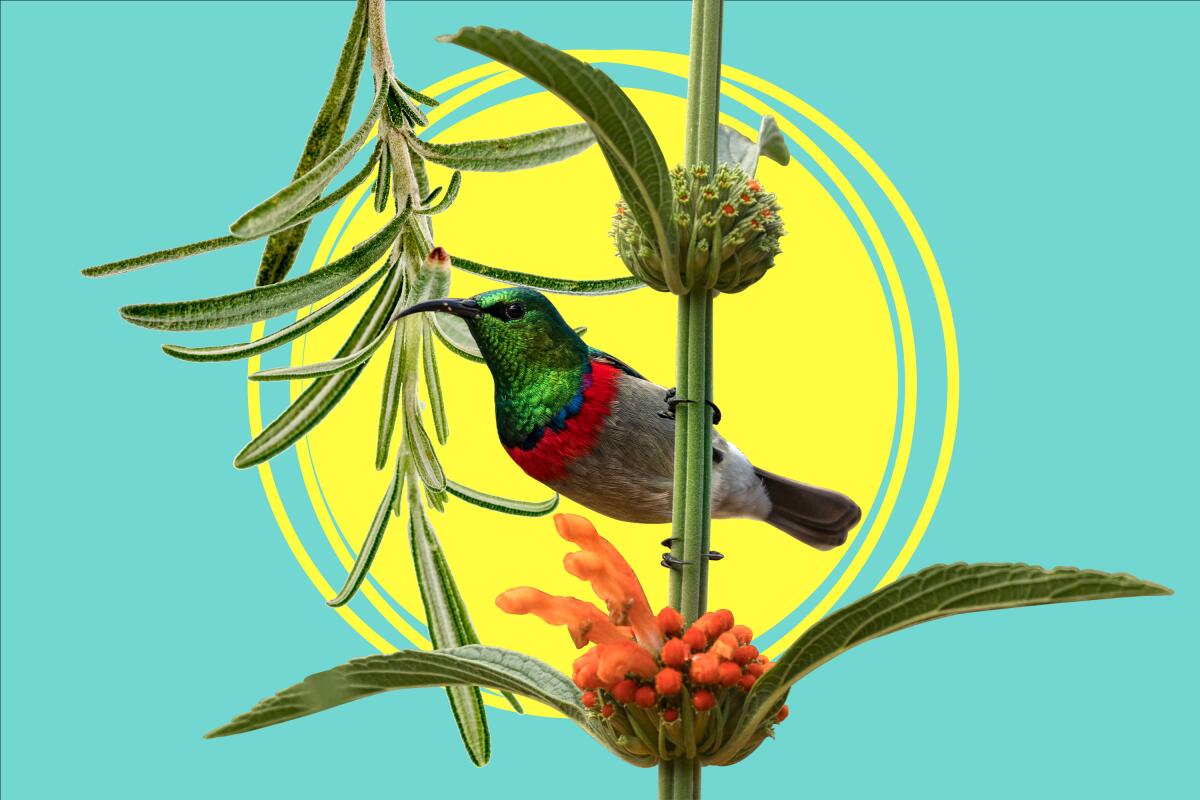
2. Tired of adding succulents to your garden to save on water? Here are a dozen other drought-tolerant plants to try. SoCal gardeners, take heart. It’s easy to turn to succulents for easy low-water plants, but don’t count out other native plants to break the monotony. Hummingbird, black and white sages, for example, smell oh-so-good and bear magenta, blue and creamy white flowers, respectively. Plan to deep-water these natives for at least six months to get them established. Check out this L.A. Times story that offers more options and explains how to get started.
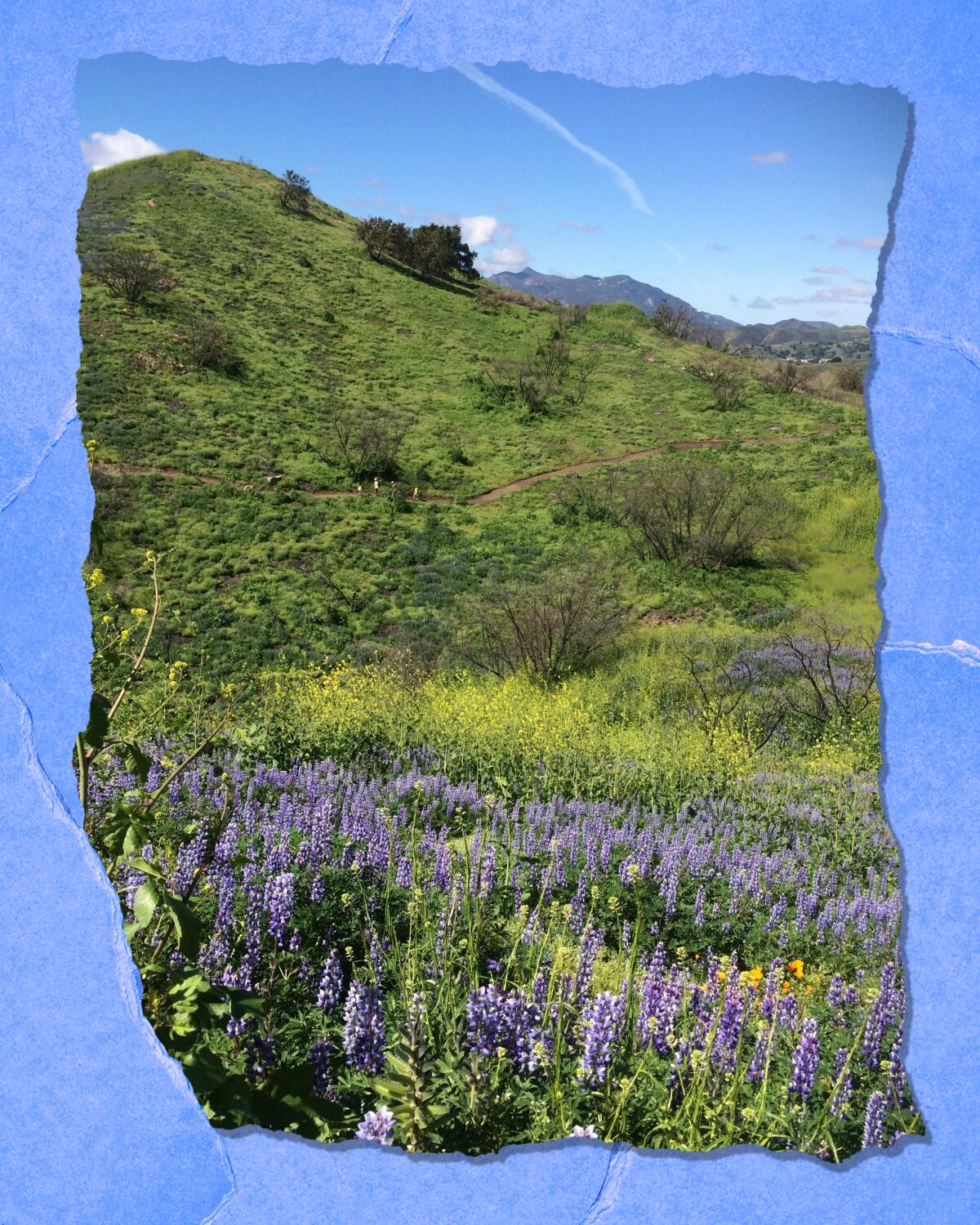
3. Complete 10 hikes this spring in the Conejo Open Space Challenge. I like challenges that take me to new places. The trail challenge by Conejo Open Space Conservation Agency fits the bill. Hikers, trail runners, mountain cyclists and horseback riders are urged to explore Ventura County routes between March 1 and May 31. The Cottonwood and Las Brisas trails, for example, along the Dos Vientos Central Loop in Newbury Park offer views of Boney Peak in the Santa Monica Mountains. Each hike in the challenge has a suggested route, map, mileage and elevation gain, and highlights of the area posted online. Post your photos on social media and, if you complete all 10, head to the post-event party and win prizes. More info from Conejo Open Space.
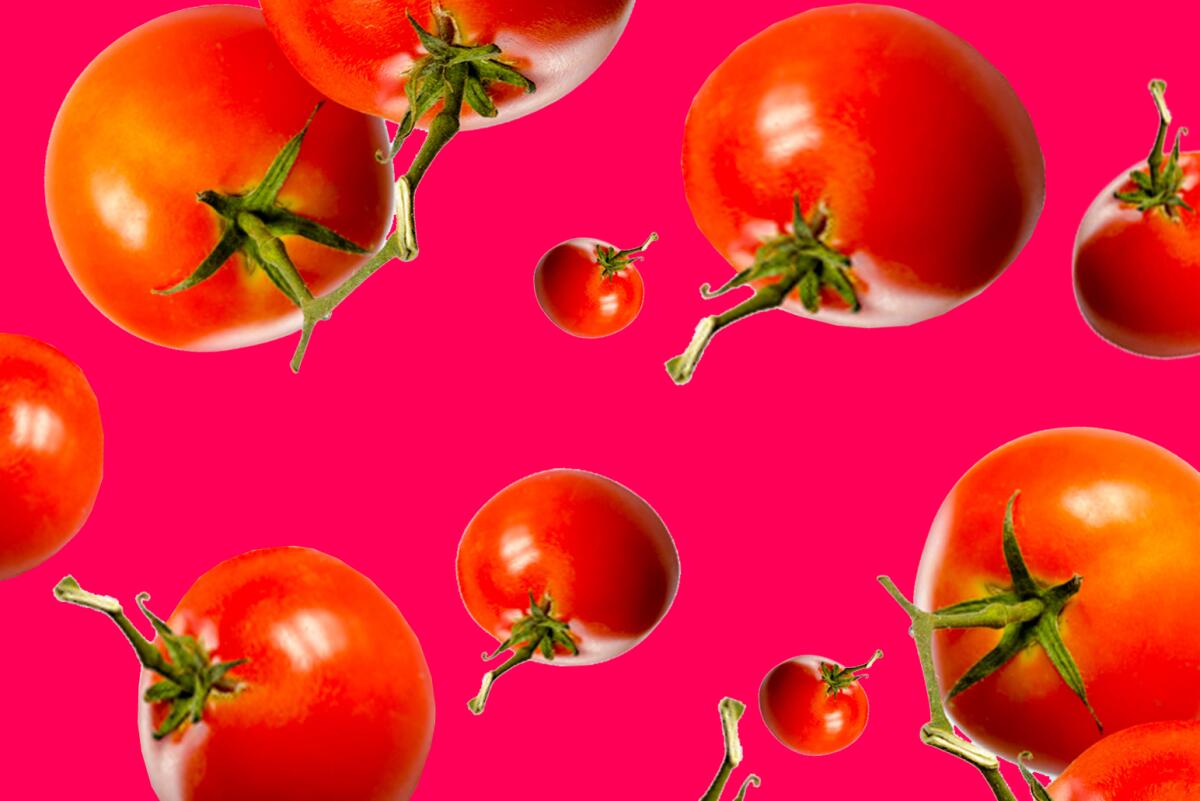
4. Tomatomania! begins in Southern California. When I hear the word Tomatomania, I think of people in the Spanish town of Buñol who engage in a good tomato fight once a year called La Tomatina. Tomatomania! is different, a California plant tradition that started at a Pasadena nursery in the 1990s for tomato lovers and tomato-loving gardeners, according to the event website. What are this year’s featured varieties? “Saucy Mary, a stripy, lime-green early producer ... and Paul Robeson, a blackish-red heirloom beefsteak variety,” among others, an L.A. Times story says. Tomatomania! begins Friday at Roger’s Gardens in Corona del Mar. Check out a full list of events, which continue through April.
Wild things

Big Bear Lake’s most famous bald eagle couple, nicknamed Jackie and Shadow, are back in the nest, which you can watch 24/7 on a Friends of Big Bear Valley webcam on YouTube. Snow lined the nest and winds shook the branches Tuesday, but eagle Jackie stayed put. “Congratulations, Jackie and Shadow! 🥚Egg1 is laid 1/22 15:43. Egg2 is laid 1/25 15:43. Pip watch begins on 2/26,” the webcam’s YouTube page said earlier. Pip watch, by the way, refers to the chicks first piercing the membrane and then the outer shell as they hatch. The pair live 145 feet above the ground in a Jeffrey pine tree. Yes, the nest’s camera is lighted at night (so viewers can watch), but the light can’t be seen by the birds. Join live chats to learn more and to watch the new family emerge.
The must-read

Music can be healing, right? But what if it’s the musical frequency that also affects your well-being? Grammy-nominated music producer, songwriter and rapper Maejor, 33, believes shifting frequencies may lead to greater wellness and positivity. Times staff writer Randall Roberts explained how Maejor became obsessed with making a seemingly small change that he believes is more aligned with nature’s patterns: “Tuning A to a slightly lower 432 hertz, and adjusting scales to calculate this change, sounds and feels better than the ‘brighter’ 440 hertz.” He’s not the only one feeling the love for 432. The story goes on to say: “Prolonged listening to these 432-hertz tones, claim various believers, reduces stress, ‘detoxifies’ cells and organs, eliminates fear and wipes out negativity.” Read the full L.A. Times story about beliefs on the benefits of pitch-correcting.
The red flag
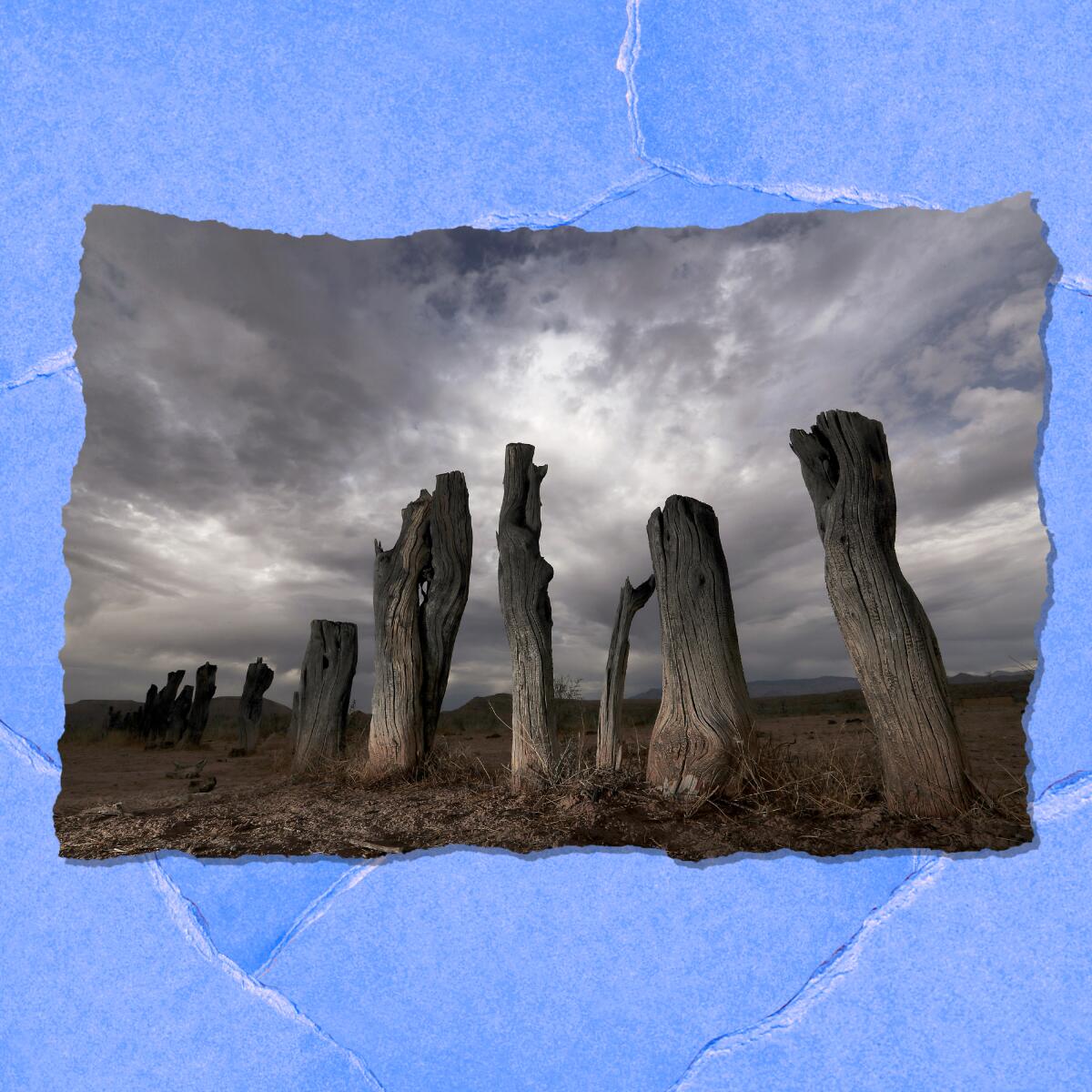
How bad is the West’s persistent dry spell? New research on major droughts in the Southwest “determined that the region’s desiccation so far this century has surpassed the severity of a megadrought in the late 1500s, making it the driest 22-year stretch on record,” according to an L.A. Times story. “The authors of the study also concluded that dry conditions will likely continue through this year and, judging from the past, may persist for years.” The story details how global warming exacerbates an already “bad luck period” for the region. Read more about what the megadrought means for Californians.
Get schooled on social
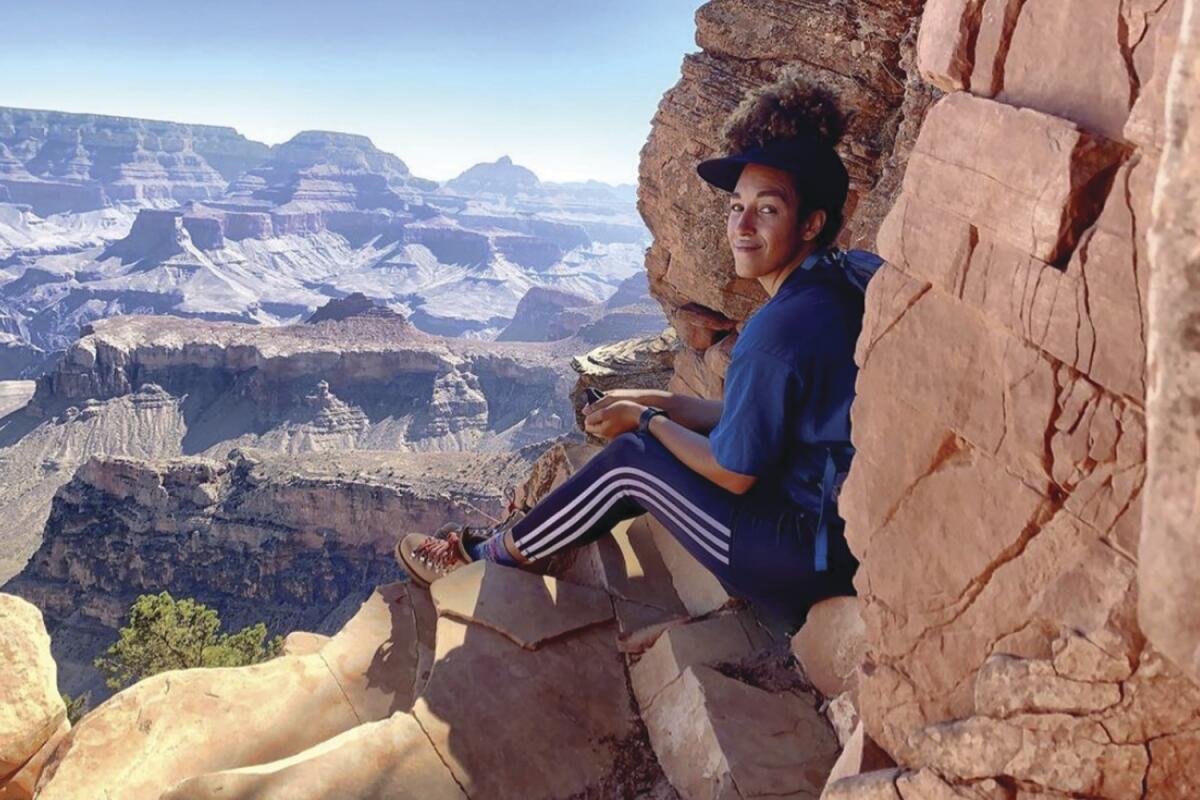
Back in the early days of the pandemic when I felt trapped in my home, I turned to social media to look for anything to distract me. What I found was L.A.-based actress and musician Tawny Newsome, 39, making videos along SoCal hiking trails and then posting them on Instagram (@trondynewman). My cooped-up self longed to be with her. Each video explained how being out in nature could help calm you at a time when the world seemed to be going sideways. Newsome wasn’t selling anything. Her message was, and still is, to encourage more Black hikers to hit the trail and feel comfortable outdoors. Check out the videos here, here and here. I spoke with Newsome recently about her videos and her hiking life (edited for clarity and brevity).
Me: What prompted you to make those videos, and whom were you making them for?
Newsome: I really was making those videos for a lot of my friends and people I know who want to experience the outdoors. They are interested, but, especially in the beginning of lockdown when there weren’t a lot of options for socializing, pre-vaccine, it was just hard to gather. More people were turning to nature, trying to figure out how to go safely. So many of my friends and people like them just didn’t know where to start. They were overwhelmed, especially in California, it can feel a bit like, “Oh no, if you didn’t already figure this out, if you didn’t figure out how to dry-camp or how to backpack or didn’t know how to use a Jetboil [backpacking stove] since you were 5 years old, you just shouldn’t try.” I really just wanted to break down the basics. Whether you do an easy hike, a hard hike or a stroll, it doesn’t matter; here’s a way to be safe and as comfortable as possible so you can get out and try it and see if you like it before you buy a bunch of expensive gear.
Me: Was part of the point of the videos to get more people of color into the outdoors? I think this is something, from national parks to local parks, that people are grappling with. Was that part of the subtext?
Newsome: For sure. Culturally and ancestrally there are a lot of interesting barriers that people of color, specifically Black people, face when it comes to getting outdoors. No. 1, and this is not specific to people of color, is the expense. Gear is expensive, and I’m always correcting people of privilege when they say, “The outdoors is free. Do something outdoors.” It’s really not. You just happen to already own a really good air mattress, a -20-degree sleeping bag, tent and camp stove, and the list goes on and on. ... My first thought was that there are some things you can do that are nearly free just by gathering things you already have around your house to aid in your safety or comfort on the trail. The other thing is that representation matters in all aspects, just seeing someone who looks more like you might motivate you to try something you didn’t think was previously for you. We see it all the time when Black athletes do winter sports, which historically many Black people previously thought was not available to them. ... Just seeing us out there helps people say, “OK, I can be out there too.” I was trying to go a step further and say: You don’t need an expensive rain shell, just grab a black garbage bag in case you get caught in a downpour.
Me: You were filming yourself in making those videos? What are your favorite places to hike?
Newsome: Most of them I did myself, yes. I tend to get far away from L.A., because our trails can get kind of crowded, which is great that people are in the outdoors. For me, I prefer a little more solitude, and I have the ability to get a little farther out. If I want a climb, I like Wildrose Peak in Death Valley; it’s a good day climb that will teach you a lesson or two. I like going up to Mammoth [Lakes area] in summer, my favorite far-flung location. I love doing hikes up there because I love the alpine lakes. ... I love the Acorn Trail in Wrightwood that goes up to a section of the Pacific Crest Trail. ... Speaking of Wrightwood, I like everything that comes off Inspiration Point. I like Anza-Borrego; it’s a place I like to go and make my own little trail to different palm oases and canyons down there.
Me: Speaking of supporting people of color and others to increase representation, how do we get there?
Newsome: My first thought is always, well, I think these big outfitters and big brands are starting to recruit more people of color and more atypical body types and ability levels to be the face of their products. They are recruiting influencers to wear their products, sending people on trips so they can take pictures of them, and all that visibility is important and is great. However, my caveat is, what these brands are not doing a great job of is paying these people from marginalized groups for their time and labor. What they tend to do is say, “Hey, I’m going to send you a box of free stuff. Will you pose with it on your Instagram?” And then they post that person’s Black or brown or Indigenous face all over their feed and kind of get credit and clout for “representing” this marginalized group. What they’re not doing is helping that person, that influencer, to sustain a life, to partially make a living doing this kind of work. To make their brand, they need to pay people to do this. They have the money to do it, because they give it to all the white people, so why not everybody?
Tawny Newsome plays Angela Ali in “Space Force,” now in its second season on Netflix. She also appears in the animated TV series “Star Trek: Lower Decks.”
P.S.
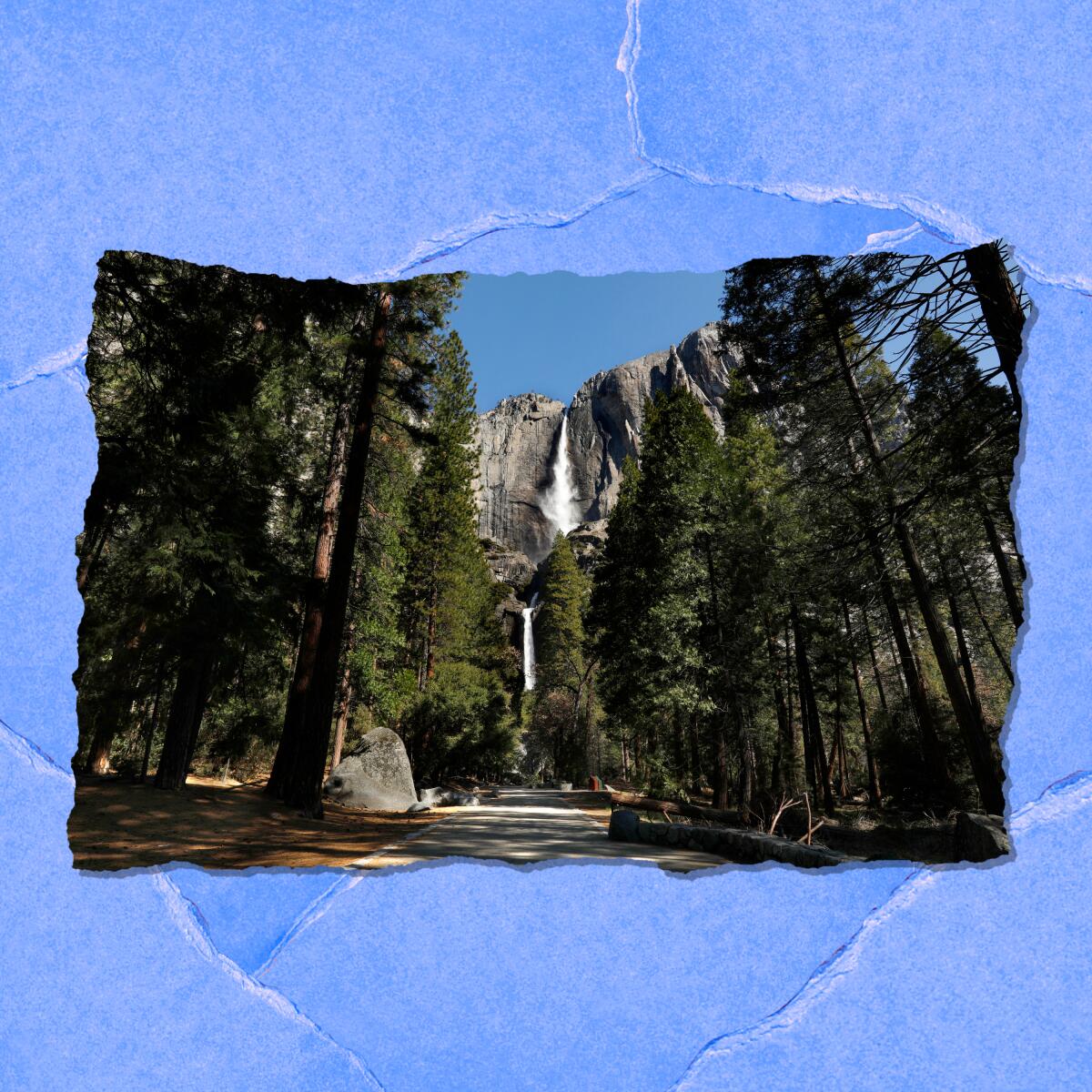
Yosemite National Park will return to a reservation system this summer in hopes of reducing congestion. That means you’ll need a reservation to enter the park from 6 a.m. to 4 p.m. between May 20 and Sept. 30. Here’s the tricky part: You need to make your reservation much earlier than your travel dates. Reservations open 8 a.m. March 23 at Recreation.gov, and each is good for three days only. You still pay the $35-per-car entrance fee plus a $2 nonrefundable reservation fee. Read the details.

Remember that period I wrote about on the gateway sign for the Mt. Wilson Trail in Sierra Madre? It has historical significance, as explained by Bob Spears, who works on sprucing up the trail above Sierra Madre. Here’s his explanation:
“You may remember that during the initial COVID outbreak and then during the Bobcat fire, the Mount Wilson Trail was closed for weeks at a time. The city used some inefficient and ugly chain link fencing at the trail head. A few friends on the Mount Wilson Trail Race Committee and I decided the city’s fencing did not do the trail justice and reached out to a local architect, Karen Moran (who also runs the race) to design a better gateway. For inspiration, Karen consulted John Robinson’s book “Sierra Madre’s Old Mount Wilson Trail.” On the cover and on Page 82 is a picture from the 1900s of the trail head with a sign that goes across the whole trail. The sign specifically has a period. We raised money for the sign from the good people using the trail and had the new gateway manufactured and installed. As a nod to the trail’s history, we kept the period. This is the true story. Lots of people ask, and sometimes we tell them that it was going to be a semicolon, but we ran out of money.”
Enjoying this newsletter? Consider subscribing to the Los Angeles Times
Your support helps us deliver the news that matters most. Become a subscriber.
Send us your thoughts
Share anything that’s on your mind. The Wild is written for you and delivered to your inbox for free. Drop us a line at TheWild@latimes.com.
Click to view the web version of this newsletter and share it with others, and sign up to have it sent weekly to your inbox. I’m Mary Forgione, and I write The Wild. I’ve been exploring trails and open spaces in Southern California for four decades.

Sign up for The Wild
We’ll help you find the best places to hike, bike and run, as well as the perfect silent spots for meditation and yoga.
You may occasionally receive promotional content from the Los Angeles Times.




